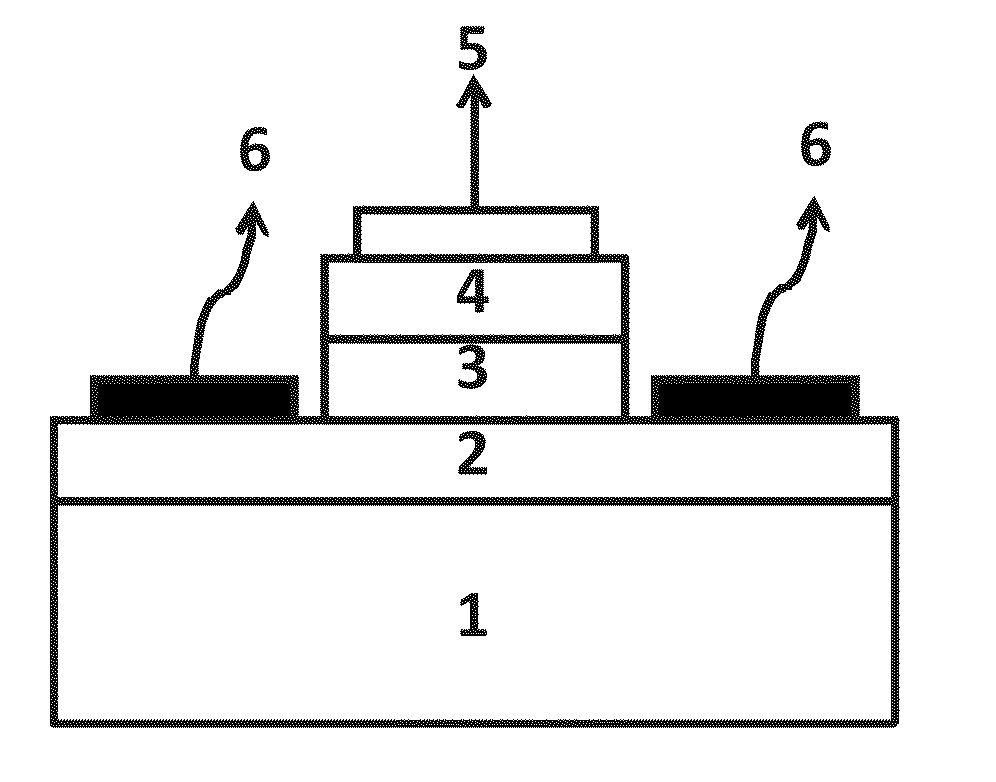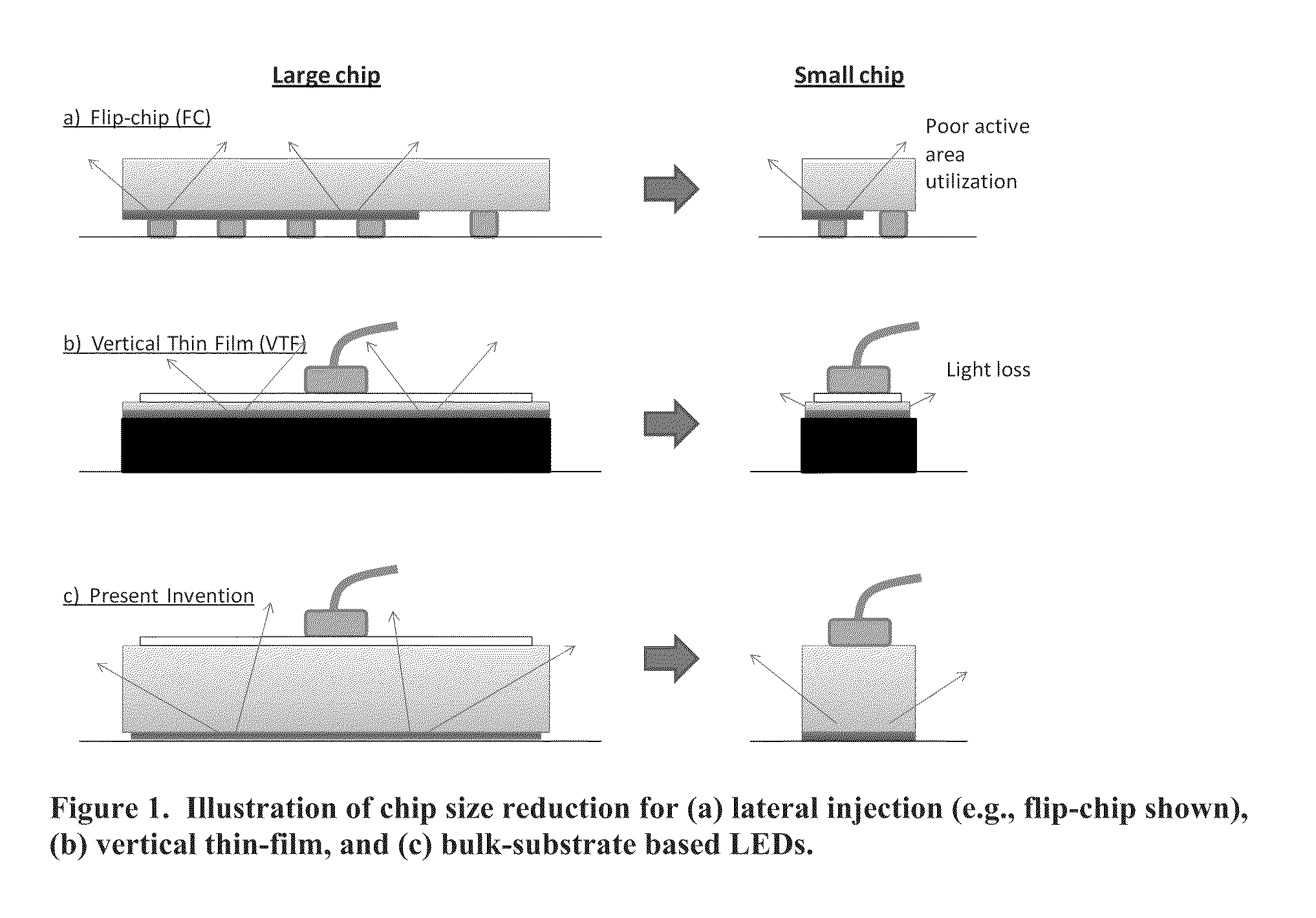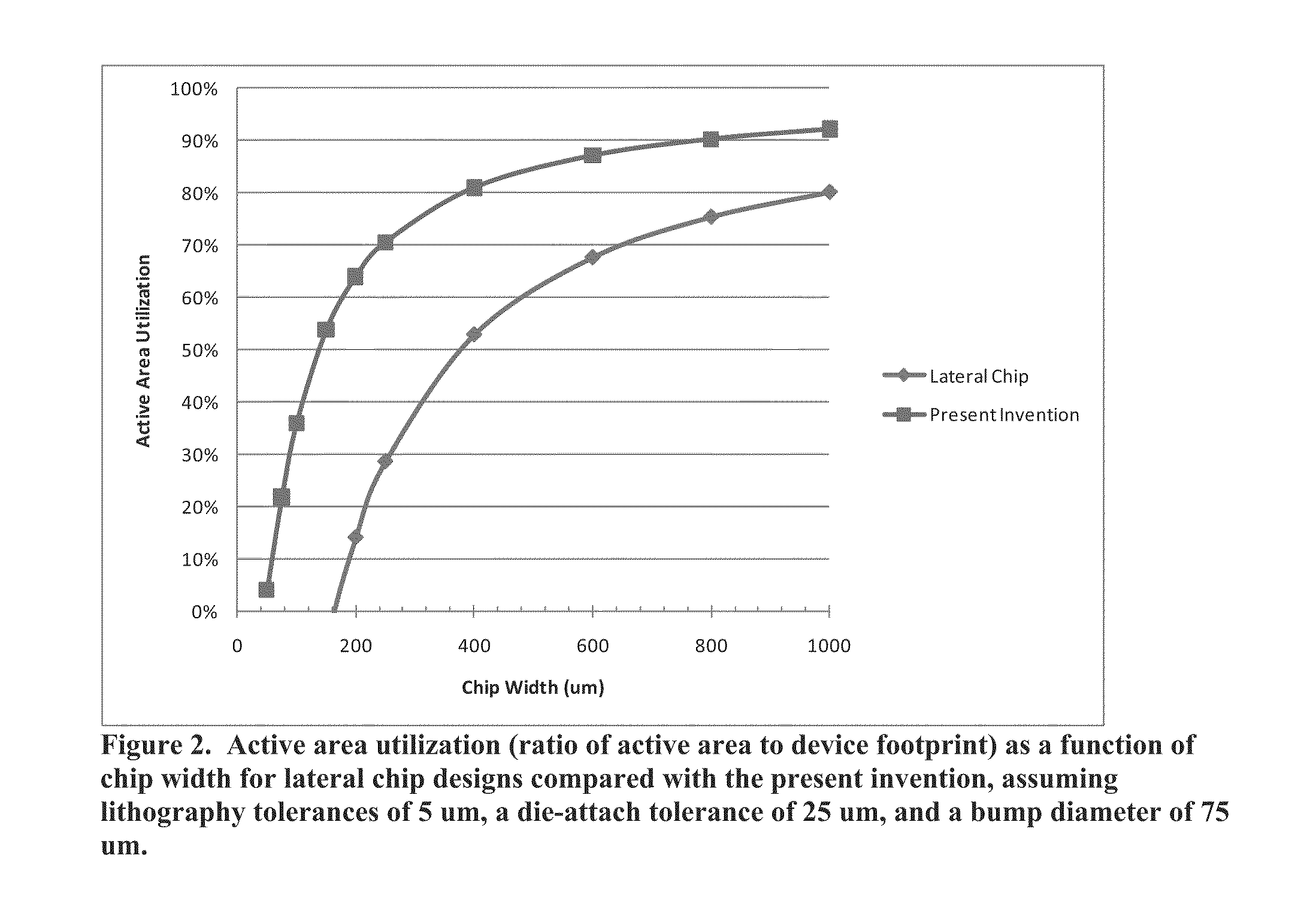Power light emitting diode and method with current density operation
a power light emitting diode and current density technology, applied in the direction of electric variable regulation, process and machine control, instruments, etc., can solve the problems of reducing active area utilization, reducing the size of lateral chips, and practical limit on die size, so as to reduce the area required for led semiconductors, reduce cost, and high light extraction efficiency
- Summary
- Abstract
- Description
- Claims
- Application Information
AI Technical Summary
Benefits of technology
Problems solved by technology
Method used
Image
Examples
Embodiment Construction
[0038]This invention relates generally to lighting techniques, and in particular to techniques for high current density LED devices fabricated on bulk gallium and nitrogen containing polar, semipolar or nonpolar materials. The invention can be applied to applications such as white lighting, multi-colored lighting, lighting for flat panel displays, other optoelectronic devices, and similar products.
[0039]We have discovered that recent breakthroughs in the field of GaN-based optoelectronics have demonstrated the great potential of devices fabricated on bulk polar, nonpolar and semipolar GaN substrates. Specifically for nonpolar and semipolar orientations, the lack of strong polarization induced electric fields that plague conventional devices on c-plane GaN leads to a greatly enhanced radiative recombination efficiency in the light emitting InGaN layers. For polar materials, the deleterious effects of polarization fields may be reduced by reducing the InN content of the active region,...
PUM
 Login to View More
Login to View More Abstract
Description
Claims
Application Information
 Login to View More
Login to View More - R&D
- Intellectual Property
- Life Sciences
- Materials
- Tech Scout
- Unparalleled Data Quality
- Higher Quality Content
- 60% Fewer Hallucinations
Browse by: Latest US Patents, China's latest patents, Technical Efficacy Thesaurus, Application Domain, Technology Topic, Popular Technical Reports.
© 2025 PatSnap. All rights reserved.Legal|Privacy policy|Modern Slavery Act Transparency Statement|Sitemap|About US| Contact US: help@patsnap.com



